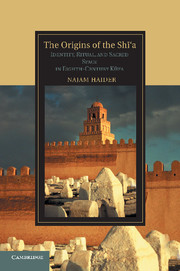Book contents
- Frontmatter
- Contents
- Maps and Tables
- Acknowledgments
- Note on Transliteration and Dates
- Abbreviations
- Map I The Middle East in the early Muslim period
- Part one Narratives And Methods
- Part two Case Studies
- 3 In the Name of God
- 4 Curses and Invocations
- 5 Drinking Matters
- Part three The Emergence of Shī’ism
- 9 Conclusion
- Bibliography
- Index
- References
5 - Drinking Matters
The Islamic Debate over Prohibition
from Part two - Case Studies
Published online by Cambridge University Press: 07 October 2011
- Frontmatter
- Contents
- Maps and Tables
- Acknowledgments
- Note on Transliteration and Dates
- Abbreviations
- Map I The Middle East in the early Muslim period
- Part one Narratives And Methods
- Part two Case Studies
- 3 In the Name of God
- 4 Curses and Invocations
- 5 Drinking Matters
- Part three The Emergence of Shī’ism
- 9 Conclusion
- Bibliography
- Index
- References
Summary
Our first two case studies were concerned primarily with ritual practice. The basmala and the qunūt are actions a supplicant must perform in a particular manner at a specified point in the daily prayer. In addition to mere physical actions, however, Muslims must pray in a lucid, unaltered mental state. The importance of this condition is emphasized in Q4:43 where God orders believers to “not approach prayer when you are drunken, until you know that which you utter.” At first glance, the verse seems rather strange given that one of the characteristic features of a pious Muslim in the contemporary world is abstinence from alcohol. Indeed, it would be difficult – if not impossible – to find a single practicing Muslim who would assert the religious permissibility of alcoholic beverages. Medieval legal tracts, however, reveal a raging early controversy over the issue of intoxicants that persisted into the 6th/12th century and was anchored in the writings of a group of early Kūfan Ḥanafī jurists.
Following the model of Chapters 3 and 4, this chapter is divided into two parts. The first provides an overview of prohibition in Islam beginning with an inventory of premodern alcoholic drinks and proceeding to a survey of the six selected law schools. The second applies the methodological approach outlined in Chapter 2 to Kūfan traditions that address the legality of alcohol. The conclusion discusses the extent to which the results align with the sectarian narratives of Chapter 1 and compares the findings to those of the previous two case studies.
- Type
- Chapter
- Information
- The Origins of the Shi'aIdentity, Ritual, and Sacred Space in Eighth-Century Kūfa, pp. 138 - 186Publisher: Cambridge University PressPrint publication year: 2011

